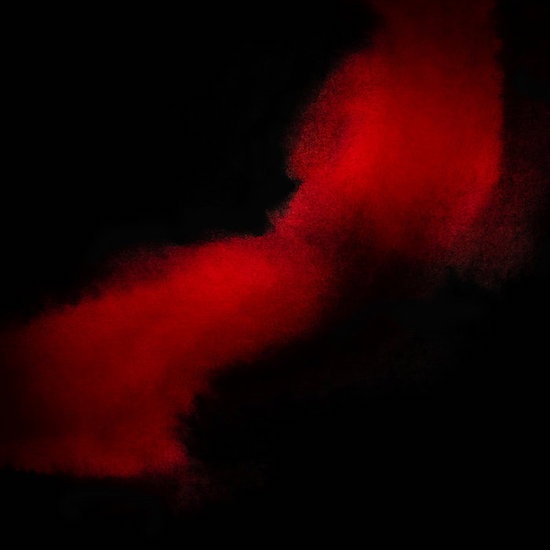
(Multiple listens and two months after the album’s release by Nuclear Blast, DGR now attempts to describe why the latest full-length by the Spanish prog-death band White Stones remains so fascinating.)
There are a few albums a year that I’ll fully own up to listening to and writing about here because they fascinate me. You can pinpoint those write-ups because I’ll often preface them with that exact statement. They’re albums where by the end of a long listening session I’m still not 100% sure where I stand on them, or they provide an indescribable difficulty in discussing why they continue to stick around.
Last year one of those albums was the Spanish death metal group White Stones‘ release Kaurahy. The Martin Mendez (of Opeth bassist fame) project’s first release was an amorphous number, one whose combination of folklore and prog-death sensibilities was hard to grasp on to. The darkened atmospheres and little light provided often felt like trying to kill a moth while it danced in and out of your flashlight’s beam, or like thinking you finally had a hold on a spiky ball and could grasp it only to have it turn completely smooth and move just outside your field of view again. It was, for lack of a better term, fascinating.
Not all of that album worked and it could at times come off a little samey and would blur together, yet an album that many were expecting to be a sort of prog-death masterpiece, given its pedigree, turning out to be an oddly discordant beast that was more often ugly groove than it was fully death was a surprising turn.
You can definitely find value in consistency though, and one year later the group behind White Stones return to us again, this time with an album entitled Dancing Into Oblivion, and save for a couple of notable changes it is once again a fascinating album.

Given that it arrives only one year after Kaurahy, Dancing Into Oblivion doesn’t see a tremendous shift in terms of sound. The lineup of the band remains largely the same, and musically White Stones still inhabit a similar realm. What Dancing Into Oblivion does do differently though is that it has allowed for the group to tighten up their sound and trim a little bit. The tale of the tape for instance would show their debut Kaurahy punching in at ten songs and a tad over forty-one minutes of music, whereas Dancing Into Oblivion is a little slimmer, only eight songs and a little under thirty-six minutes of music.
The two still share a similar blueprint song-wise though; both are bookended by instrumental numbers with all of their music in between. What is also different with Dancing Into Oblivion is that it plays out a little jazzier, and there are multiple moments where the rhythm section is really brought to the forefront, with a song like “Chain of Command” especially containing a slithering bass line that leads the whole track. Another is that the song-lengths are all over the map. You’ll have smaller numbers like “Woven Dream” – which is another atmospheric piece – coming in at just over two, serving as the interstitial break between a truly epic-length “Iron Titans” (at eight minutes and forty-three seconds) and the near-five of “To Live or To Die”. Dancing Into Oblivion unfolds out like it has movements, with one huge chunk of music barging out of the opening, then a calm bit, then two more discordant and messier songs, and then the last calm bit.
“Iron Titans” has White Stones covering a ton of ground as well. The group gave themselves nearly nine minutes to play with and they give it their full attention, swinging from a fairly quiet and laid-back opening into a massive swath of death metal that seems written to be as unnerving as possible. There’s even segments throughout where White Stones seem to be trying to figure out how to work a little surf-rock guitar into the backing rhythm of the song, before the track immolates itself in a bit of chaotic riff-work and noise.
That theme repeats itself a few times throughout Dancing Into Oblivion but the spectre of it shows its face during “Iron Titans” exploration of prog-death and jazz work and how to slam the two into each other. “Freedom In Captivity” plays off that sound during the closing movement of the album and the song ties the album off neatly as it does what is quickly becoming the traditional rhythmic rumble that is the driver of many White Stones songs. Despite that, it still wouldn’t be too shocking to see that “Chain Of Command” is the song that gets brought up the most often from Dancing Into Oblivion. It’s about as mainstream and single-oriented as Dancing Into Oblivion gets — which you’ll note is still two degrees left of bizarre at times and ugly enough that you still have a sense you shouldn’t be approaching the thing unless you’re in a well-lit area.
When I dove into Kaurahy last year I found that the album remained nebulous to me, even after repeated listens. It was hard to explain why I enjoyed it so much and, as mentioned above, every time where there seemed to be a solid grasp available it would somehow squid-ink itself just out of view again. It’s a noisy and fuzzed-out album that remained fascinating long after its release and Dancing Into Oblivion is very similar in that regard. While there’s a firmer grasp available and some of the songs aren’t afraid to let themselves crawl their way into your skull, it’s still an unfriendly landscape. Dancing Into Oblvion and Kaurahy are thus some of the best examples of albums being siblings of one another. You could treat the whole experience as a sort of double-album given the short time frame between the two releases.
White Stones have found themselves a niche in a sort of noisier mid-tempo groove where the rhythm section often drives songs more than the guitar work does, whipping the band through all sorts of prog and death metal spheres before things wrap up. Sometimes it feels like the genre-fication of this band is just an exercise to avoid saying “well, its kind of bizarrely and intentionally ugly music”. But, much like its older sibling Dancing Into Oblivion does the similar act wherein even multiple listens and two months after release, the damned thing just remains fascinating.
https://bfan.link/dancing-into-oblivion
https://www.facebook.com/WhiteStonesOfficial/
